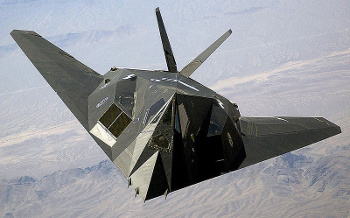George Heilmeier and the DARPA Questions
March 13, 2012
There are limitations on
scientific discovery. As an example, there's the idea that "there are some things that Man was not meant to know," as succinctly described in this monologue of
Victor Frankenstein in the sixth paragraph of chapter four of
Mary Shelly's Frankenstein:
"Learn from me, if not by my precepts, at least by my example, how dangerous is the acquirement of knowledge, and how much happier that man is who believes his native town to be the world, than he who aspires to become greater than his nature will allow."[1]
Aside from such
philosophical discourse, there's the practical matter that improved
instrumentation is at the root of most scientific discovery. Without such devices, science would not advance. The
invention of the
telescope by
Hans Lippershey allowed the astronomical observations of
Galileo shortly thereafter. The
invention of the
microscope allowed
Robert Hooke's observations of the
cellular structure of organisms that he published in his 1665
Micrographia.

Flea engraving from Robert Hooke's Micrographia (1665).
(Via Wikimedia Commons))
Then, there's the idea that all things that can be discovered will be discovered one day. As I wrote in a
previous article (A Limit to Science?, November 12, 2010), it may take humans a
millennium to realize that science was over.
Galileo and Hooke's scientific instruments were not that expensive in their manufacture, but major scientific discoveries presently require costly instrumentation and huge teams for their maintenance and operation.
NASA's James Webb Space Telescope is valued at $8.8-billion,[2] and the
Large Hadron Collider, whose primary purpose is to discover the
origin of mass, required a
$9 billion mass of money to build.
It's not just
physics and
astronomy projects that are so expensive. The
Human Genome Project cost the US government
$2.7 billion, and this was just a portion of its nearly $4 billion total cost. There should be a rule of thumb that all "
Big Science" projects cost $10 billion. The
frontiers of science may be limited by the amount of money that society is willing to invest in it.
While I was working in
industrial research, the limits of our investigations were set by business requirements, not by science. Many an interesting
phenomenon that we observed could not be researched in more detail, since no one would pay for the work.
As a consequence,
university scientists and
engineers would rediscover these same phenomena many years hence, and they would score a
publication. I felt like
Paul Erdös, who would purposely not publish some
mathematical truth he had discovered in order to give younger mathematicians a chance for their
fifteen minutes of fame.
There's one way that industrial scientists can pursue the
more abstract type of science. That's by getting a proposal funded by the
Defense Advanced Research Projects Agency (DARPA). Your employer wins by scoring some
overhead expenses, the scientist wins by doing what he was trained to do, and society wins by getting the benefits of leading-edge scientific discovery. DARPA, of course, does not fund all proposals. It has some guidelines.
DARPA is in the business of funding what one of my colleagues described as "wild and crazy ideas." In fact, DARPA won't fund any ordinary and practical research that might be supported by other agencies. The ideas, however, can't be too wild and crazy, since that might be a waste of
taxpayer money.
That's what
George H. Heilmeier, director of DARPA from 1975 – 1977, must have been thinking when he codified a way to assess proposals by asking specific questions.[3-5] These are commonly called the "DARPA Questions."
Heilmeier was just announced as a co-recipient of the 2012
Charles Stark Draper Prize of the
National Academy of Engineering in recognition of his early career work in the development of
liquid crystal displays. The Draper prize, with its huge monetary award, is the
engineering equivalent of a
Nobel Prize.
Heilmeier was assistant director of DARPA from 1971-1975 before becoming its director from 1975-1977. After DARPA, Heilmeier was
chief technology officer of
Texas Instruments, then
president and
CEO of
Bellcore/Telcordia.
Heilmeier's DARPA questions, as paraphrased on
Wikipedia,[4] are as follow:
• What are you trying to do? Articulate your objectives using absolutely no jargon.
• How is it done today, and what are the limits of current practice?
• What's new in your approach and why do you think it will be successful?
• Who cares?
• If you're successful, what difference will it make?
• What are the risks and the payoffs?
• How much will it cost?
• How long will it take?
• What are the midterm and final "exams" to check for success?
These questions were an attempt to transform research from a technology-driven regime in which solutions were looking for problems, to one in which science would be enlisted to provide solutions to a set of requirements. It would be worthwhile answering these questions for any research program.
Aside from this year's Draper Prize, Heilmeier is the recipient of numerous other honors, including the 1976
IEEE David Sarnoff Award, the 1991
National Medal of Science, the 2005
Kyoto Prize in advanced technology, and the 2006
Edwin H. Land Medal of the
Optical Society of America.

One of Heilmeier's initiatives as DARPA Director was the creation of "invisible aircraft."
United States Air Force F-117A Nighthawk Stealth Fighter.
(Via Wikimedia Commons))
References:
- Mary Wollstonecraft Shelley, "Frankenstein," free downloads from Project Gutenburg.
- Ralph Vartabedian and W.J. Hennigan, "NASA's Webb telescope: Revolutionary design, runaway costs," Los Angeles Times, February 18, 2012.
- George H. Heilmeier Biography on the IEEE Web Site.
- George H. Heilmeier Page on Wikipedia.
- Chris Brantley, "The Heilmeier Catechism," Today's Engineer (IEEE), February, 2012
Permanent Link to this article
Linked Keywords: Scientific discovery; Victor Frankenstein; Mary Shelly; Frankenstein; philosophy; instrumentation; history of the telescope; invention; telescope; Hans Lippershey; Galileo; timeline of microscope technology; microscope; Robert Hooke; cell; Micrographia; Flea; ; Wikimedia Commons; millennium; NASA; James Webb Space Telescope; Large Hadron Collider; Higgs boson; origin of mass; cost; physics; astronomy; Human Genome Project; Big Science; frontiers of science; industrial research; phenomenon; university; scientist; engineer; scientific publication; Paul Erdos; mathematics; fifteen minutes of fame; pure research; DARPA; Defense Advanced Research Projects Agency; overhead expense; taxpayer money; George H. Heilmeier; Charles Stark Draper Prize; National Academy of Engineering; liquid crystal display; engineering; Nobel Prize; chief technology officer; Texas Instruments; president; chief executive officer; CEO; Bellcore; Telcordia; Wikipedia; IEEE David Sarnoff Award; National Medal of Science; Kyoto Prize in advanced technology; Edwin H. Land Medal; Optical Society of America; United States Air Force; F-117A Nighthawk Stealth Fighter; Project Gutenburg.